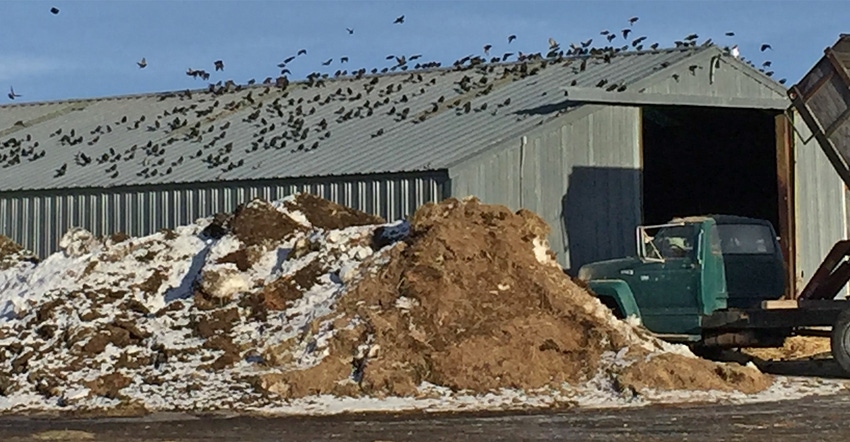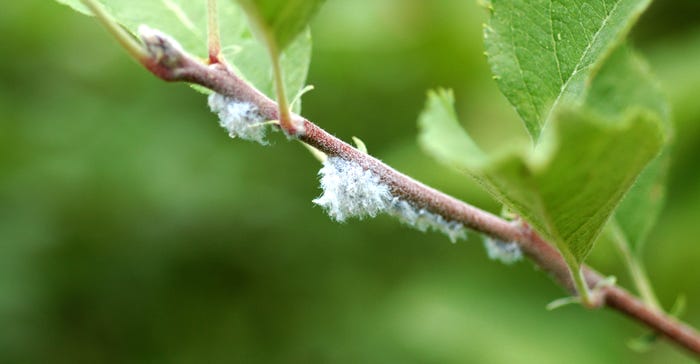August 16, 2018

Starlings cause feed trouble and can pester cattle, too. And bugs eating apples aren’t desirable, either. However, the methods producers choose to tackle these pests matter, because an approach that works on one part of the problem may cause trouble elsewhere.
For example, Amber Adams-Progar, Extension dairy management specialist, Washington State University, found that starlings can have an impact on feed quality. She’s found that raptors on-site can make a difference, but their use must be coordinated with other control methods.
“The starling populations are exploding, and yet raptor populations are declining,” Adams-Progar says. “This may be from toxicants like Starlicide that do kill starlings — but affect raptors that eat the poisoned birds.”
That “food chain” challenge from pest to predator has been observed around the world. Sara Kross, an assistant professor in the Department of Environmental Studies at California State University, Sacramento, has just received grant funding to study the effect of rodenticide on barn owls. Her previous research showed that barn owls reduce the populations of gophers, mice and voles in vineyards, orchards and row crops.
The growers she worked with on this study increased the number of barn owls on their farms by building nest boxes and perches, but also still applied rodenticide. The question to answer is whether this combined natural predator and chemical approach to rodent control is self-defeating, because the barn owls die from eating rodents that carry the poison.
“We want to see how often barn owls are exposed to anticoagulants,” Kross explains. “We’ll use [global positioning systems] to track the owls’ movements, and overlap that data with where rodenticides are applied to work out where the owls are exposed.”

WOOLLY TROUBLE: The woolly apply aphid is a yield-robber, and controlling it is a primary issue. However, treating with products that impact a beneficial predator would be costly.

Anticoagulant science
First-generation anticoagulants take a couple days to kill the animal, and the animal must eat a lot of bait for a lethal dose. Some animal species developed a resistance to first-generation anticoagulants, so the second generation was developed with a higher toxicity level. It can still take a few days for the higher dose in a second-generation anticoagulant to kill the animal.
“During that time,” Kross explains, “the animal can consume more than a lethal dose. They become packets of poison that are just running around and can be picked off by a predator.”
With evidence of secondary poisoning of rodent predators, the state of California banned farmers from using second-generation anticoagulants in the field. They can still use the second-generation product around buildings.
Bugs not immune
For Robert Orpet, WSU Extension graduate student, Department of Entomology, encouraging earwigs in orchards makes sense, but there are certain insecticides to avoid, including spinosad and carbaryl, which can reduce earwig populations. “Spinosad is an organic pesticide, but that doesn’t mean it’s safer or friendly to beneficial insects,” Orpet explains. “Earwigs only have one generation per year. If they are knocked down by insecticides, it takes them a long time to recover.”
The pest control methods you choose on your operation should work together for the long term. You want to bring the “integrated” into Integrated Pest Management.
Hemken writes from Lander, Wyo.
About the Author(s)
You May Also Like




